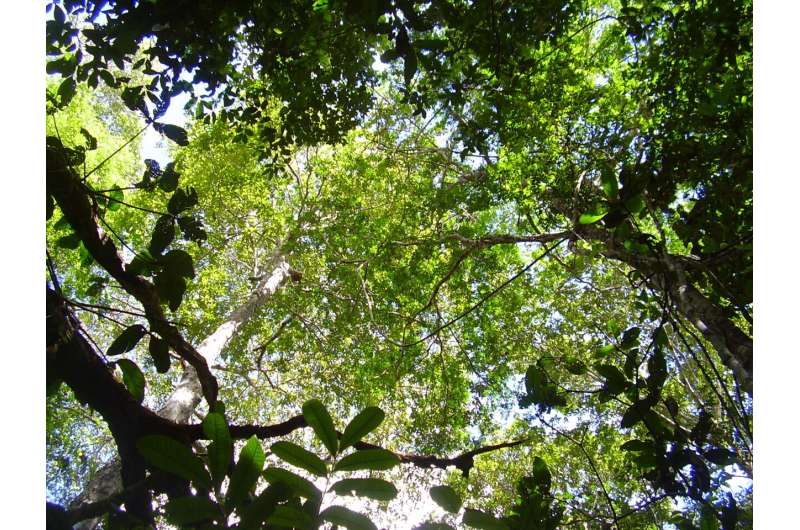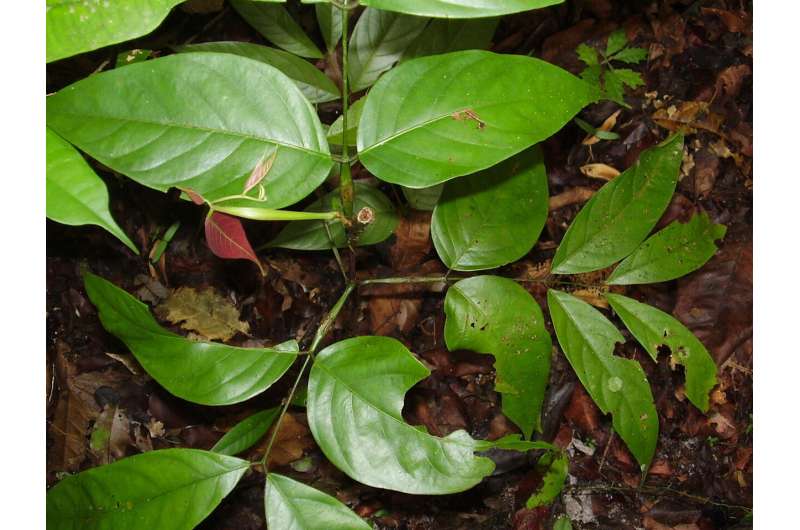This article has been reviewed according to Science X's editorial process and policies. Editors have highlighted the following attributes while ensuring the content's credibility:
fact-checked
peer-reviewed publication
trusted source
proofread
Naturally regrowing forests are helping to protect the remaining old forests in the Amazon

The climate crisis and UN Decade on Ecosystem Restoration have generated great interest in the value of secondary forests. These are forests that have regrown naturally on land abandoned from agriculture.
Collaborative research between Lancaster University, Bangor University, and the University of British Columbia has produced new evidence of just how important they are in counteracting the effects of forest fragmentation across the Amazon basin. This has just been published in a paper in the journal Environmental Research Letters.
It is an output of the Ph.D. research of Charlotte Smith, in the Envision Doctoral Training Partnership, in which Bangor University is a partner.
Co-author of the paper, John Healey, Professor of Forest Sciences at Bangor University, described how it shows "that secondary forests cover just 190,000 km2 of the Amazon but connect more than 2 million isolated fragments of old-growth forest, prominent among the world's most important habitats for biodiversity conservation. The secondary forests are helping maintain connectivity for patches of old-growth forest that are too small to support long-term viable populations of rare species."

Charlotte Smith reported "Secondary forests are buffering as much as 41% of old-growth forest edges, potentially shielding them from negative edge effects such as hotter temperatures and wind. Proximity to old-growth forests can also help the rate of biodiversity and biomass recovery in secondary forests. It is positive that 94% of secondary forests were connected to old-growth forest."
"However, may old-growth forest remnants are small and degraded patches, so only 57% of secondary forest was connected to an area of extensive, structurally-intact old-growth."
Professor Healey pointed out the importance of this research, "It provides powerful new evidence of the importance of managing forests at the landscape scale. Promoting forest restoration through secondary forests located next to old-growth forest remnants can play a vital role in both conserving biodiversity in these remnants and the rate of biodiversity recovery in the secondary forests themselves."
He then explained "there are interesting parallels with the findings of Bangor's recent research on the "Climate Smart Woodlands" project about the best spatial location of new woodlands in Wales, at a landscape scale."
More information: Charlotte C Smith et al, Amazonian secondary forests are greatly reducing fragmentation and edge exposure in old-growth forests, Environmental Research Letters (2023). DOI: 10.1088/1748-9326/ad039e
Journal information: Environmental Research Letters
Provided by Bangor University




















